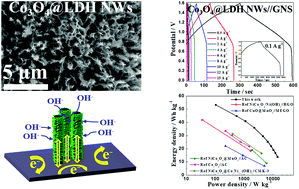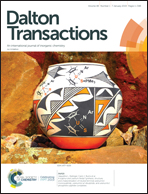3D heterostructured cobalt oxide@layered double hydroxide core–shell networks on nickel foam for high-performance hybrid supercapacitor
Abstract
High performance of an electrode relies largely on scrupulous design of nanoarchitectures and smart hybridization of bespoke active materials. Here, a 3D heterostructured core–shell architecture was fabricated as a supercapacitor electrode, in which Co3O4 nanowire cores were grown on nickel foam prior to the in situ deposition of layered double hydroxide (LDH) nanosheet shells. Owing to the unique configuration and hybridization, the as-fabricated Co3O4@LDH core–shell electrode exhibited high capacities of 818.6 C g−1 at 2 A g−1 and 479.3 C g−1 at 40 A g−1 (3.2 C cm−2 at 7.8 mA cm−2 and 1.87 C cm−2 at 156 mA cm−2), which were much higher than those of the individual components, namely, Co3O4 and LDH. A hybrid supercapacitor with Co3O4@LDH as the positive electrode and graphene nanosheets as the negative electrode yielded an energy density of 53.2 W h kg−1 and a power density of 16.4 kW kg−1, which outperformed devices reported in the literature; the device also exhibited long-term cycling stability and retained 71% of its initial capacity even after 10 000 cycles at 6 A g−1. The rational design of the core–shell architecture may lead to the development of new strategies for fabricating promising electrode materials for electrochemical energy storage.



 Please wait while we load your content...
Please wait while we load your content...